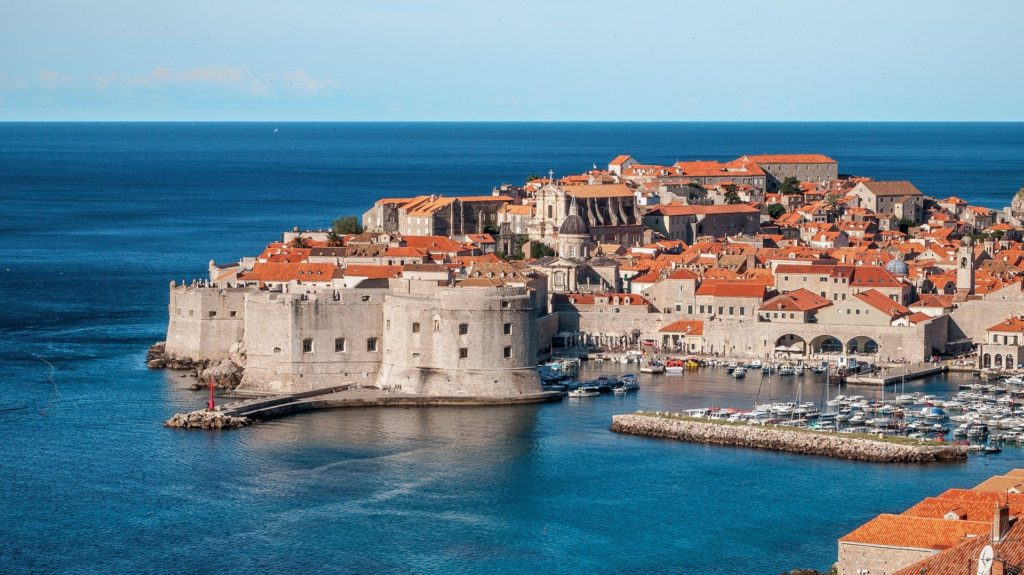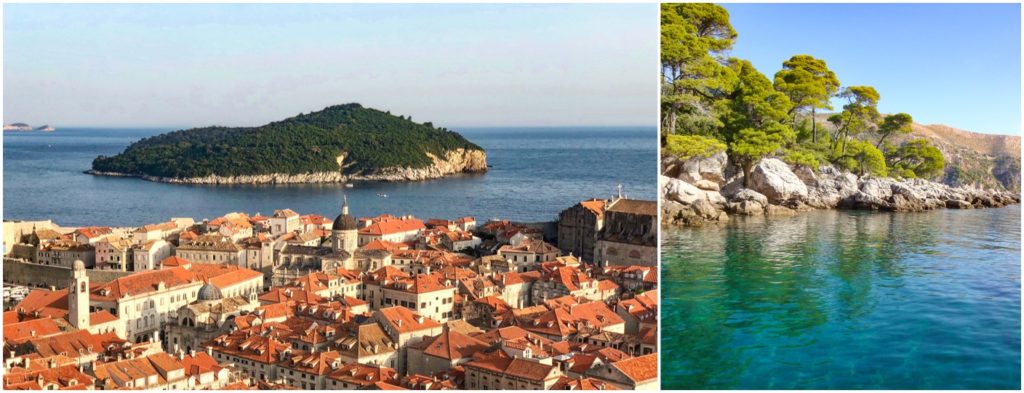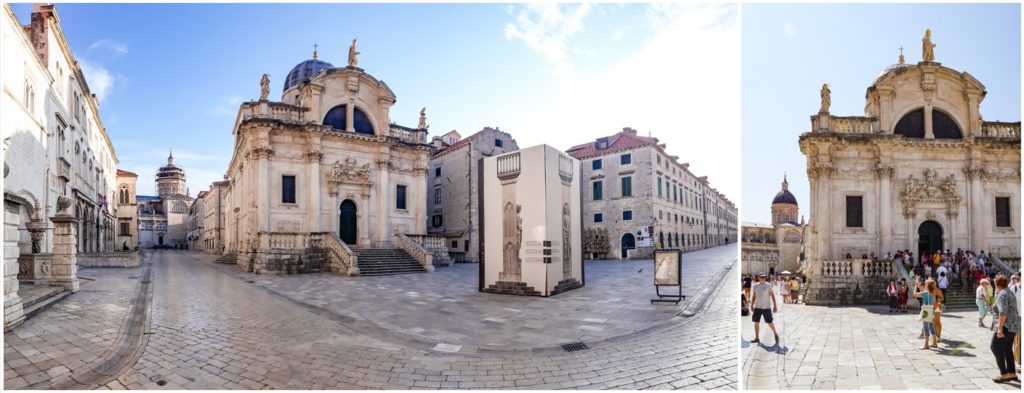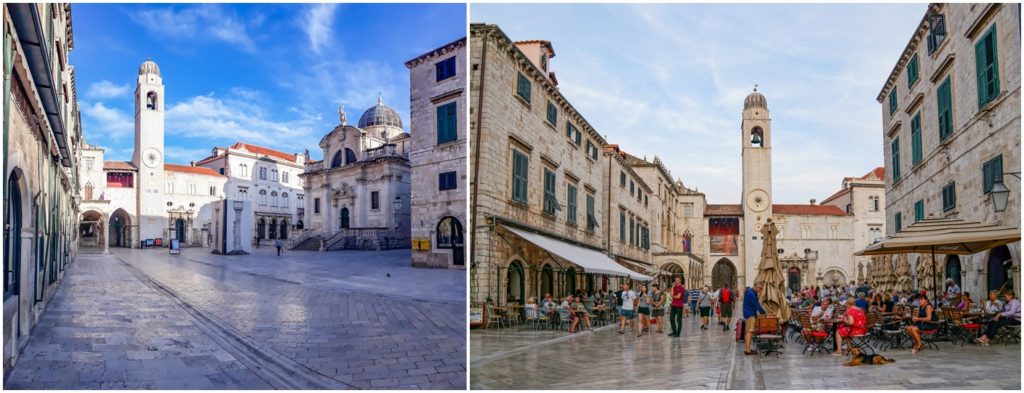The History of Quarantine in Dubrovnik: An Interview with our Local Guide

The city of Dubrovnik
As millions of people across the globe brace for another week of self-isolation in response to the COVID-19 pandemic, Tasteful Croatian Journeys delves into Dubrovnik’s fascinating history as one of the first places in the world to institute a mandatory quarantine in 1377. Here to help us is our trusted guide and Dubrovnik local, Marina Missoni Barišić, discovering the history of quarantine in Dubrovnik.

Tasteful Croatian Journeys’ local Dubrovnik guide, Marina Missoni Barišić
TCJ: Marina, thank you so much for taking the time to speak with us and share your knowledge. Maybe you could start by telling our readers a little bit about yourself, where you’re from, and how long you’ve been working with Tasteful Croatian Journeys.
Marina: I was born and grew up in Dubrovnik. After high school I went to study to Zagreb where I graduated Italian and Spanish language and literature at the Faculty of Humanities and Social Sciences, University of Zagreb. I started working as a tourist guide during my last years of college, in 2002, and, sincerely, I never thought that would be my main profession. Somehow, I fell in love with guiding…probably, because it’s the perfect combination of two things I love most – languages and history. With Tasteful Croatian Journeys I’ve worked successfully for over a decade and I like very much the personal approach to the clients. I appreciate also the clients’ interest for my homeland and their respect for Croatian culture and traditions.

The Island of Lokrum, once used to quarantine arriving merchants
TCJ: It seems that regardless of where people live at the moment, we are all having a single shared experience due to the COVID-19 pandemic. Here in the United States a word we hear often on the news when talking about the pandemic is “unprecedented,” but when we look back at history, we know that is not the case in Dubrovnik, as it was one of the first places to ever institute a mandatory quarantine. Can you tell us a little more about that? When and why did Dubrovnik require a quarantine? What were they protecting against?
Marina: Since the Middle Ages, Dubrovnik developed the trading activities by sea, but also with the hinterlands and in the 14th century it was already a very successful business town. During the medieval period it often faced leprosy and other contagious diseases and because of that there were special areas outside the city, leprosariums, where the people with leprosy were isolated and several legal provisions in the Dubrovnik Statute regulated the society’s relation towards the lepers. In the mid 14th century the Great Plague, known as the Black Death, spread all over Europe and, unfortunately, Dubrovnik was not left out; the plague took many lives. In spite of it, life and trading activity went on, so in 1377 the Dubrovnik government issued the regulation that “every ship arriving from a pestilential area, with its crew, passengers and goods, needed to stop in the nearby island of Mrkan and Cavtat on the mainland for thirty days before coming into the town. After a while, the period was prolonged to forty days (ital. quaranta – forty) and that originated the word quarantine. Later was decided that the ships should stop in the islands of Bobara, Supetar and also Mljet.
The conceptual originality of this decision was the attempt of prevention of the contagious disease and not isolating already infected people. This slowed the circulation of people and the goods traffic, but it didn’t stop the economy completely.

A view of the lazaretto near Dubrovnik’s eastern gate (Ploče), and a view inside the lazaretto.
TCJ: Did the city have special facilities that were used for quarantining visitors? How did that work exactly?
Marina: In the beginning, the people stayed in provisional huts or in already existing buildings (such as the Benedictine monastery on Mljet). The huts could be easily burnt down as a measure of disinfection, but also because the Dubrovnik government didn’t want solid buildings in the places that an enemy could use for its base. During the 15th and the 16th century there were many epidemics of plague and that led to the construction of new lazzarettos for the isolation of the infected (in the western part of town called Danče, on Lokum island) and, finally, after considerable hesitation, it was decided that a new, big lazaretto should be built close to the eastern town’s gate, in Ploče area.
TCJ: How did Dubrovnik’s contemporaries handle the threat of infectious diseases? Was Dubrovnik’s position any different? How?
Marina: For what I’ve read, Venice, Genova and other merchant city states also introduced the decisions about isolating the infected in determined areas and about stopping the ships arriving from the suspicious regions; as in Dubrovnik, also in Venice there was a special sanitary commission composed of noblemen who controlled the hygienic conditions in the town, registered the deaths, took care of the clothes and objects remained after the deceased etc. In the 15th century Venice founded the first lazzaretto, that is, a place with a public hospital determined to isolate and take care of the infected.
Dubrovnik’s position was somehow different. By the end of the 15th century the Ottomans conquered the today’s Bosnia and Herzegovina which meant that just few miles away from the town there was the border with the Ottoman Empire. Dubrovnik had established good diplomatic relations with the Turks even before and continued with a successful trade activity all through the Ottoman territory. Unfortunately, the plague often spread to Dubrovnik territory from there and that is why the whole area next to the eastern town’s gate, Ploče, was used as a quarantine. Before the construction of the big lazaretto there were smaller buildings used for quarantine or even private houses where the merchants, or Dubrovnik diplomats who were coming back from their missions in the Ottoman Empire, needed to stay during their quarantine period. In 1647 was finished the big complex of Lazareti (lazarettos) containing ten buildings and five inner courtyards for the accommodation of the quarantined passengers and the warehouses where the goods were deposed and ventilated. Lazareti were used as a quarantine for the ships and for the caravans. The duration period of the quarantine was determined by the sanitary commission according to where the passengers were coming from and the evaluation of the risk of a disease in that moment. It could vary from 7, 8 to 40 days. Lazareti were used as a quarantine, more or less intensively, until 1870-ies.

A view of Dubrovnik with the eastern gate (Ploče) lazaretto visible on the right.
TCJ: Do the Lazarettos still exist today? Can visitors see them?
Marina: Yes, they still exist. Whenever I start a walking tour from a hotel situated in the eastern part of town, we always walk through the Lazareti plateau so the guests get an idea about what the complex was and that’s a perfect introduction to the tour.
After the last restoration, the Lazareti complex was reopened in July 2019 and it is again used as a place for different exhibitions, art workshops, ballet and folklore rehearsals and performances, concerts etc.

On the left: St. Blaise’s Church in Dubrovnik during the COVID-19 pandemic. On the right: St. Blaise’s Church on a warm September day.
TCJ: How is Dubrovnik handling the present-day pandemic? What sort of measures has the government instituted to protect its citizens? Tell us a little about your day to day life right now.
Marina: The government started to introduce the preventive measures by the middle of March when the number of infected grew and when our epidemiologists evaluated it was the moment to reduce social contacts. The measures were introduced gradually – closure of schools and kindergartens, cancellation of all public events and activities, closure of museums and galleries, then restaurants, bars, shops besides supermarkets and pharmacies that work reduced hours. The children have a virtual school, they get their materials through different programs on tablets, by e-mail etc. Only the people employed in the hospitals, police and other public services work, the others are advised to stay at home. Most of the people are disciplined and respect the recommended measures. It seems that our government instituted those measures in the right moment, but it is still too early to say anything on how and when it is going to end.

On the left: the streets of Dubrovnik during the COVID-19 pandemic. On the right: Dubrovnik on a warm September day.
TCJ: We know that tourism is a huge part of your country’s economy. Obviously, the pandemic has had a huge impact on this. How have you seen your community come together during this time of crisis to deal with this challenge?
Marina: This crisis already has and definitely will have huge economic consequences, especially because in this moment it is impossible to plan anything and many people depend on it. The government released temporary financial measures to help enterprisers, especially those with employees, but it is all temporary. As far as the everyday life, there are organizations like the Civil Protection that trained volunteers who help the elderly and the people in need in their everyday needs like groceries, medications etc. Each neighborhood has a group of volunteers that walk around and warn the people if they notice that the recommended measures are not being respected in some way.

On the left: Rector’s Palace in Dubrovnik during the COVID-19 pandemic. On the right: Rector’s Palace on a warm September day.
TCJ: Our team is anxious to return to Croatia and see all of our friends and colleagues there. Like us, we are sure that many other people have a new found appreciation for the freedom of travel. Why should Croatia be at the top of their lists once travel restrictions have eased and the virus is no longer a concern?
Marina: The good thing about Croatia is that it can offer history, natural beauties and relaxation with short distances. The guests can do the walking tour in the morning, and already in the afternoon enjoy relaxing at the beach with a view to the historical sites. I am especially happy when the guests say that they have already been to Croatia and decided to come again, some even several times. We will do our best to keep the quality of our services so that the visitors feel comfortable in our country and that they keep it in a wonderful memory once they come home.
TCJ: Thank you Marina, we of course agree that Croatia has so much to offer curious travelers! Thank you for taking the time to speak with us and tell our readers more about Dubrovnik’s fascinating history.
Tasteful Croatian Journeys creates custom luxury itineraries, individually crafted and exquisitely managed by award-winning specialist, Wanda S. Radetti, and her team of trusted travel designers. Our travelers enjoy upscale amenities, chauffeured transport, and curated cultural experiences, enhanced by real-time personalized concierge support. Contact us to plan your Croatian trip of a lifetime!